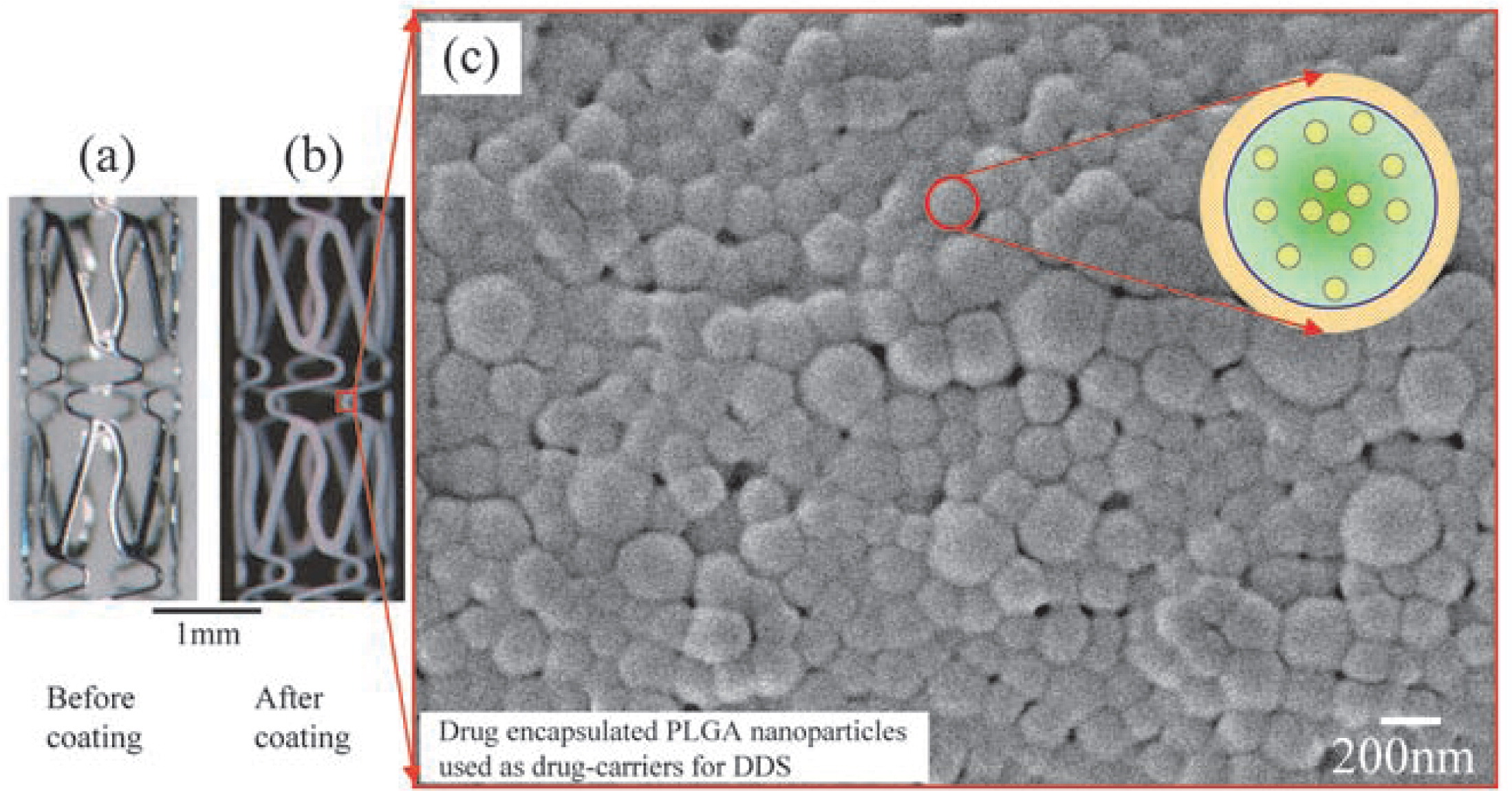2013 年 30 巻 p. 2
2013 年 30 巻 p. 2

Optical microscope photographs of a bare metal stent (a) and a drug-eluting stent coated with PLGA nanoparticles (b), SEM image of drug encapsulated PLGA nanoparticles coated onto the stent surface(c).
The photo shows the “stent” coated with “biocompatible and bioabsorbable poly (D, L-lactide-co-glycolide) (PLGA) nanoparticles (NPs)” which are known to have advanced DDS functions such as the sustained-release by its hydrolysis property and the intracellular delivery by its small size effect. “Stent” is a medical device formed of metallic meshed tube and used as a measure to treat the stenosis of the artery to improve the blood flow by eternal expanding and supporting of the blood vessels.
The use of a bare metal stent (BMS) as the 1st generation device is known to reduce the re-stenosis by 20∼30%. The re-stenosis rate was reduced to <10% by drug-eluting stents (DES) developed as the 2nd generation, which gradually release a drug substance such as an anticancer or immunosuppressive agent from the polymer layer formed on the stent surface to the blood vessel. However, it became a new major concern1) that the late stent thrombosis (LST) resulted in higher rate of mortality or myocardial infarction by irritating properties of the polymer layer containing the drugs than BMS from the half year follow-up.
Under these circumstances, various kinds of the 3rd generation stent have been actively developed2). Authors also focus on the development of new stent using PLGA nanoparticles as the 3rd generation. The nonirritating drug loaded PLGA NPs coated stent can be expected to drastically restrain the re-stenosis rate by sustained-releasing the drug from the PLGA NPs delivered in inflammatory cells by the disembarrassment as nanoparticles from the surface of the expanded stent.
No.9, Shodai-Tajika 1-chome, Hirakata, Osaka 573-1132, JAPAN